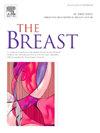Investigating the prognostic role of citrullination-related genes in breast cancer by combining transcriptomics, single-cell analysis and verification
IF 7.9
2区 医学
Q1 OBSTETRICS & GYNECOLOGY
引用次数: 0
Abstract
Citrullination, a process linked to autoimmune diseases, has been implicated in cancer, but its role in breast cancer (BRCA) remains unclear. This study aimed to identify citrullination-related genes (CRGs) associated with prognosis in BRCA. We utilized datasets from The Cancer Genome Atlas (TCGA-BRCA) and Gene Expression Omnibus (GEO), pinpointing candidate genes by intersecting differentially expressed genes (DEGs) from TCGA-BRCA with known CRGs. Prognostic CRGs were selected using univariate Cox regression and Lasso regression analyses, and a predictive nomogram was created based on independent prognostic factors identified through multivariate Cox regression. Our findings revealed that SEZ6, S100B, SPIB, and TFF1 were key CRGs used to construct a risk model. High-risk BRCA patients exhibited immune-suppressive tumor microenvironments (TMEs) with low CD8+ T cell mutation and enrichment in C1/C4 immune subtypes. In contrast, low-risk patients displayed high immune infiltration and enrichment in C2/C3/C6 subtypes. High expression of S100B, SPIB, and TFF1 was associated with increased immune infiltration by NK cells and T cells, while high SEZ6 expression was linked to neutrophil mutations, PD-L1 upregulation, and low CD8+ T cell infiltration. Molecular docking studies explored the interactions of these CRGs with entinostat. In conclusion, SEZ6, S100B, SPIB, and TFF1 were identified as significant prognostic genes in BRCA, providing insights into BRCA pathogenesis and potential personalized treatment strategies.
结合转录组学、单细胞分析和验证研究瓜氨酸相关基因在乳腺癌中的预后作用。
瓜氨酸化是一种与自身免疫性疾病相关的过程,与癌症有关,但其在乳腺癌(BRCA)中的作用尚不清楚。本研究旨在鉴定与BRCA预后相关的瓜氨酸相关基因(CRGs)。我们利用来自癌症基因组图谱(TCGA-BRCA)和基因表达图谱(GEO)的数据集,通过将TCGA-BRCA中的差异表达基因(DEGs)与已知的CRGs相交来确定候选基因。采用单变量Cox回归和Lasso回归分析选择预后crg,并根据多变量Cox回归确定的独立预后因素建立预测nomogram。结果表明,SEZ6、S100B、SPIB和TFF1是构建风险模型的关键crg。高危BRCA患者表现出免疫抑制肿瘤微环境(TMEs), CD8+ T细胞突变低,C1/C4免疫亚型富集。相比之下,低危患者在C2/C3/C6亚型中表现出较高的免疫浸润和富集。S100B、SPIB和TFF1的高表达与NK细胞和T细胞的免疫浸润增加有关,而SEZ6的高表达与中性粒细胞突变、PD-L1上调和CD8+ T细胞浸润低有关。分子对接研究探索了这些CRGs与entinostat的相互作用。综上所述,SEZ6, S100B, SPIB和TFF1被确定为BRCA的重要预后基因,为BRCA的发病机制和潜在的个性化治疗策略提供了见解。
本文章由计算机程序翻译,如有差异,请以英文原文为准。
求助全文
约1分钟内获得全文
求助全文
来源期刊

Breast
医学-妇产科学
CiteScore
8.70
自引率
2.60%
发文量
165
审稿时长
59 days
期刊介绍:
The Breast is an international, multidisciplinary journal for researchers and clinicians, which focuses on translational and clinical research for the advancement of breast cancer prevention, diagnosis and treatment of all stages.
 求助内容:
求助内容: 应助结果提醒方式:
应助结果提醒方式:


